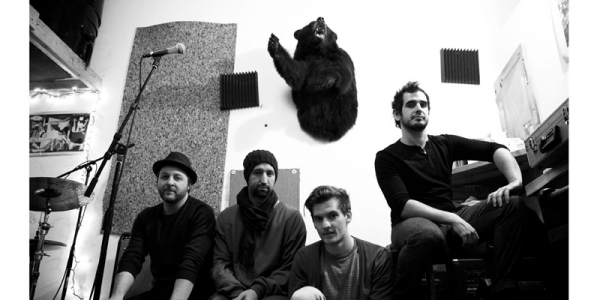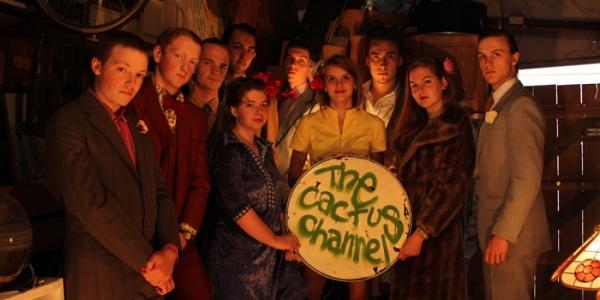“We loved it,” says Pioro, reached on the phone with Marks from Sydney. “We wanted to go to New York so we pooled our resources and made it happen. We just immersed ourselves in New York City for six months.”
And the results speak for themselves. Armed with a new lead singer, goodbyemotel used the trip as an opportunity to rub shoulders with some influential figures in the music industry, which in turn had a massive influence on their sound.
“I reckon [the trip] turned out even better than we’d hoped,” says Pioro.
“New York’s a mecca for musicians; we ended up getting David Bowie’s guitarist and Bruce Springsteen’s back-up singer to come in and lay down some vocals and play on some tracks. There’s just musicians everywhere, so you have to immerse yourself.”
The band also hooked up with Kevin Killen, the producer who’s worked with U2 and Peter Gabriel, amongst others. Killen was a perfect fit for the band, exposing the visual elements of the band’s music.
But for Marks, what remained important was how close goodbyemotel grew as a band, in spite of the odds.
“It was really good just to go away as a band, come up with some new music,” he admits. “We started to gel as a band again with a new singer. It was a big change, but with all of us on neutral territory it was the right place to do it.
“We lived together in a house in Brooklyn, so we were stuck with each other. The music comes naturally to all of us, but the drummer pulled out just two or three days before we left. That’s fair enough, but we were set to play CMJ and had no drummer. It was interesting, but we’ve got some great management over there and found a new drummer rather quickly. Everything happened very quickly, but it was one of the best things we’ve ever done.”
Propelled by their work with such high-profile producers and musicians, not only was goodbyemotel able to play festivals such as CMJ, Pioro and Marks were able to write with an enthusiasm and energy they’d never experienced.
“We’d done something like 100 demos that we could work from,” says Pioro. “We sat down with our producer and manager and tried to pick 12 of them. We had to piece things together, find the best melodies, etcetera. It was nice to have some fresh ears and get some new feedback. There was one song in particular that we’d had in the kettle for some time. It just kept sticking around and it wouldn’t die. And Kevin asked us about it; we weren’t too thrilled about it, but he ended up saying, ‘U2 would’ve been proud to write that one!’ So that sold us. It’s good to have people around us know about progression.”
Progression remains an immoveable part of the goodbyemotel aesthetic. With Pioro and Marks running their own production company, the band merges their music with consistently strong visual elements.
For goodbyemotel, the ability to bring the sonic landscapes within their songs to life is not just something they strive towards; it’s what makes them the band they are today.
“We sat down two years ago and worked out who we wanted to be as a band,” says Pioro. “Almost as if we were writing a mission statement. Just so that everyone’s on the same page. One of the things we wanted to be was really innovative. We wanted to be very entertaining, but we’re not Pearl Jam in the ‘90s. We’re not jumping around, leaping off of buildings. We didn’t want to try and be something we’re not. But we do visual communication really well.”
“And we’re massive Pink Floyd fans,” adds Marks. “That’s where it all comes from as well.”
“We thought, let’s do something very different,” continues Pioro.
The two then detail the inner workings of their upcoming 3D event. Simply put, it has to be seen to be believed.
“We proposed the idea to a few people,” says Pioro, “And as soon as they started to say, ‘No, you can’t do that,’ I knew we were doing the right thing.”
Their time in New York now behind them, the band is keen to move on and expose the intensely visual aspect of their music to the rest of the world.
“It’s not something that happens on purpose,” says Marks of their pairing of musical and visual elements. “It starts from the music, and that creates scenes for us. They go hand in hand. It all comes down to communication. Because we have the ability to write songs and create visual productions, we feel lazy if we don’t do both.”
BY JOSHUA KLOKE

